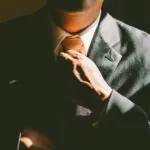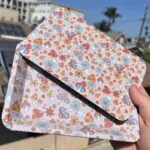Founded in 1945, Elle has always been a magazine for women. Its French name means ’She reads Elle’, and its content is a mix of fashion shows, trends, culture, and art.
The Gentlewoman has a gift for taking something ostensibly light and using it to make a deeper point (the latest issue invited a queer former soldier, a ‘Sainsbury’s bouncer’ and a tortured art tutor to dress up in post-quarantine rave looks). It also takes great joy in mocking other fashion magazines.
Harper’s Bazaar
When it comes to fashion magazines, the name that everyone knows is Harper’s Bazaar. This Hearst publication carries the label “The Style Resource for Women Who are First to Buy the Best, from Casual to Couture”. It was founded in 1867 and is considered America’s oldest magazine. Current editor-in-chief Glenda Bailey continues the publication’s focus on sophisticated fashion and culture.
In the past, the magazine has not been afraid to be controversial, such as publishing a nude and pregnant Britney Spears cover in 2006. However, it remains an arbiter of style. The app offers readers an unrivaled source of ownable style in fashion, beauty, travel and culture.
Elle
With 45 editions worldwide and 21 million readers, ELLE is one of the most widely-read fashion magazines. Its content combines high fashion and beauty with culture and lifestyle.
The magazine is playful, not taking itself too seriously and making a point of exploring female power, self-worth and the importance of a strong personal style. It also takes a look behind the glitz and glamour of the industry.
Its features are diverse, from a piece on the Nigerian menswear brand KK Obi to a photographic essay that stages phobias by Maurizio Cattelan and Pierpaolo Ferrari for Toiletpaper. The editorials are often unexpected and thought-provoking.
Marie Claire
Marie Claire features a mix of beauty, fashion, and career content for women. It also has a strong history of agenda-setting journalism, including on issues like equal pay and paid maternity leave. The magazine is read by a confident, savvy female audience.
The Marie Claire brand connects with over 100 million women across 28 markets globally. The company also hosts events, such as the Power Trip, a 36-hour networking event for high-achieving women.
The magazine offers an app that allows readers to shop directly from its pages. It also has a mcommerce partnership with Pongr, which uses image recognition to let readers scan products.
V
The V Magazine is a fashion magazine that showcases the latest trends and styles. It also covers topics about the fashion industry in general. The magazine has an international audience and is available on subscription. It is considered to be one of the most popular fashion magazines in the world.
The term fashion forward is often used to describe clothes that are very trendy and stylish. For example, hybrid boots that were advertised several months before they were released were described as being fashion forward because they were very unique and would set a trend in the future.
Business of Fashion
Fashion executives are focusing on crisis management now, but they will eventually need to shift their energy to reimagining the industry. This is particularly true of the global supply chain.
Founded in 2007 as a project of passion, Business of Fashion began filling a void for an informed, analytical and opinionated point of view on the fashion business. The company leverages a network of savvy writers and fashion insiders in style capitals around the world.
McKinsey is honored to collaborate with Business of Fashion on this important work. The authors wish to thank Achim Berg (senior partner in our Frankfurt office), Leonie Brantberg, Saskia Hedrich, and Robb Young for their contributions to this article.
BoF
Since its inception, BoF has become a renowned reference for those who want to analyze and understand the fashion industry. The site offers exclusive interviews and scoops, as well as a section dedicated to the world of work, which makes it stand out from its competition.
British fashion designer Samuel Ross explains why he feels that the creative industries still have to go a long way in terms of diversity. He speaks to BoF editor-in-chief Imran Amed.






Comments closed.